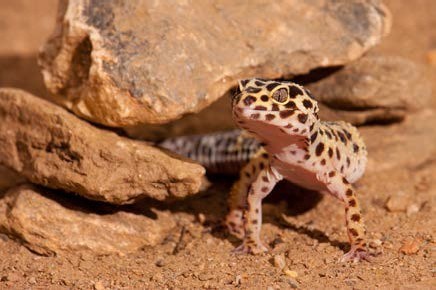LEOPARD GECKO
Insights into the leopard gecko
John Courteney-Smith MRSB of Arcadia Reptile continues his in-depth series examining what we know about the universally popular leopard gecko from the wild, and how this information can be best utilised to care for these lizards in vivarium surroundings.
Part 2

Photo courtesy Eric Isselee/
www.shutterstock.com Reptile keeping as a hobby is evolving very quickly indeed. Many of the ‘old ways’ are now regarded as invalid, as knowledge has advanced. Over recent years, there has been a move towards naturalistic and bioactive enclosures, marking a trend towards mimicking the wild surroundings in terms of enclosure design. These are not new ideas though; in fact they have been bought back from the early days into the modern hobby, and then finally made accessible and indeed successful for all. This has occurred because of our much better understanding of reptile biology and by the vast improvement in the affordable technology needed to allow these systems to work properly.

It is vital that rock stacks within the vivarium are adequately supported and safe.
Photo courtesy DanielSnake/
www.shutterstock.com Specific requirements
What does this all mean for the leopard gecko (Eublepharis macularius) and its ongoing care?
Having explored the ecosystem where these lizards are found in the wild in the last issue, I now want to focus on how to incorporate these features into the care of the species in vivarium surroundings. Overall, their care should be based around an environment of rocky, surface-arid ‘scrubland’. It then becomes a matter of designing enclosures in order to replicate this type of ecosystem in a safe, measured and effective way. It has been good to see a marked move in the hobby towards providing larger enclosures for leopard geckos.